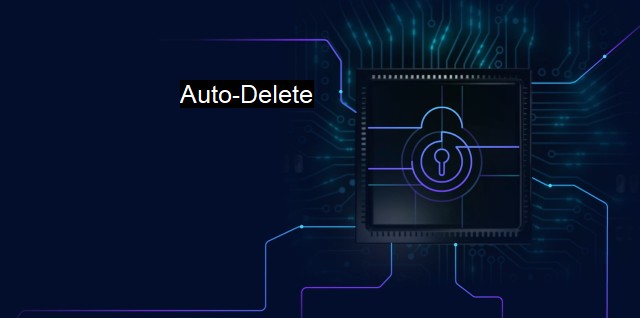What is Auto-Delete?
The rise of cyber threats and the significance of auto-delete in enhancing antivirus software: A crucial defense against malware in the digital age
Auto-Delete, with is the automated process through which digital systems identify and eliminate threats or undesirable items without immediate human intervention. This practice has become increasingly significant in bolstering cybersecurity infrastructure and protecting user data.Auto-Delete is often associated with antivirus and anti-malware programs, which aim to automatically detect and delete potential threats before they inflict damage. The logic behind this automated reaction is direct: since cyber threats often spring to action within an instant of infiltration, the time it takes for human detection and manual deletion may be too long to prevent an attack effectively.
Auto-Delete is backed up by heuristic and signature-based detection technologies, among others. Heuristic technology empowers antivirus programs to recognize threats based on their behavioral attributes. it scans for patterns that often portray harmful intent, such as code modifications and unauthorized access to sensitive data. By contrast, signature-based detection catalogues identifiable features unique to known malware, thus enabling antiviruses to recognize and delete malicious software that matches these documented signatures.
In antivirus programs, the Auto-Delete function usually works in real-time, regularly scanning and monitoring files and registry entries for suspicious activities. Once a potential threat is identified, the program isolates and auto-deletes the malicious file, promptly alerting the user about the attempted infiltration. Some antiviruses allow users to customize the auto-delete feature, dictating the conditions under which it should delete files and what actions to take when threats of various magnitudes are spotted.
As with any technology, auto-delete functions are not flawless. At times, they can mistake legitimate applications, documents or software as threats due to their behavior, resulting in a 'false positive’ situation where the antivirus auto-deletes important data or programs deemed harmless by the user.
Such incidents highlight one of the significant obstacles in cybersecurity: delineating dangerous actions from typical, acceptable computing behaviour. To tackle this, users are compelled to effectively whitelist applications and directories perceived to be reliable by manually updating settings of auto-delete functions.
Relying solely on auto-delete might certainly mitigate immediate risks, but it could conversely lead the user to develop a false sense of security. Diverse, advanced array of cyber threats exist that sophisticated antivirus applications may fail to detect. As a result, Auto-Delete, while a powerful tool in cybersecurity landscape, should be supplemented with other protective measures such as data encryption, robust passwords, secure networks, and general cyber hygiene
Auto-Delete functionality in the cybersecurity schema primarily vows to defend systems against cyber threats by means of automated detection and deletion processes. It serves as a key component in antivirus programs to combat malware and other malicious elements traveling across the digital world. it is crucial for users to utilize this tool judiciously and maintain vigilance simultaneously, embracing a multi-faceted approach to cybersecurity, to ensure the utmost safety of their digital world.

Auto-Delete FAQs
What is auto-delete in the context of cybersecurity and antivirus?
Auto-delete is a feature in cybersecurity and antivirus software that automatically removes or deletes malicious software or files without the need for user intervention. This feature helps to prevent the spread of malware and other harmful files on a computer system.How does auto-delete work in cybersecurity and antivirus software?
Auto-delete works by scanning the computer system for any suspicious or malicious software or files, and then automatically removing them. The software or files are usually moved to a quarantine area before they are deleted to allow for verification that they are indeed malicious. Once confirmed, the auto-delete feature removes the software or files without user intervention.Is auto-delete a reliable feature in cybersecurity and antivirus software?
Yes, auto-delete is a reliable feature in cybersecurity and antivirus software. However, it is important to note that no cybersecurity or antivirus software is 100% foolproof, and there may be occasions where the auto-delete feature may inadvertently remove legitimate software or files. That's why it's essential to stay vigilant and review the items that have been moved to quarantine before deleting them.Can the auto-delete feature be turned off in cybersecurity and antivirus software?
Yes, the auto-delete feature can usually be turned off in cybersecurity and antivirus software. However, it's not recommended to disable this feature as it can leave your computer system vulnerable to malware and other malicious software. Instead, users should keep the feature enabled but regularly check the items that are moved to quarantine before deleting them.| | A | | | B | | | C | | | D | | | E | | | F | | | G | | | H | | | I | | | J | | | K | | | L | | | M | |
| | N | | | O | | | P | | | Q | | | R | | | S | | | T | | | U | | | V | | | W | | | X | | | Y | | | Z | |
| | 1 | | | 2 | | | 3 | | | 4 | | | 7 | | | 8 | | |||||||